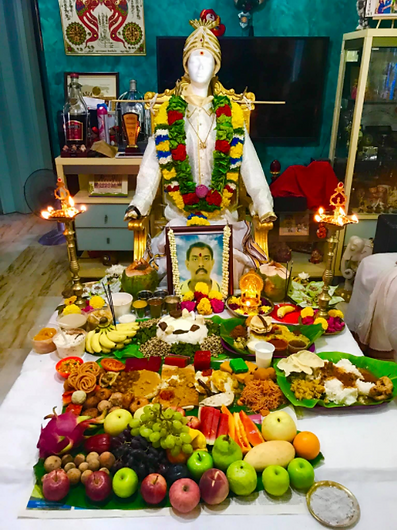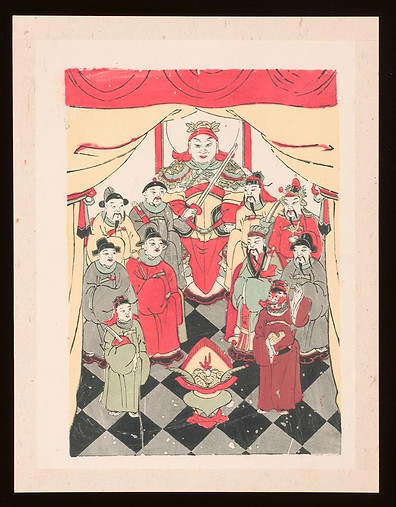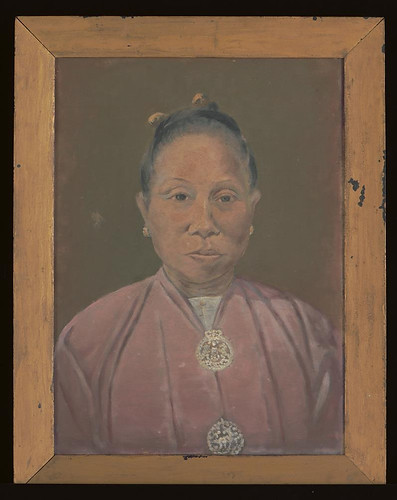
Taoism
It is common for Toaist families to have an ancestral tablet at home. Family members will offer incense and flowers to the ancestral tablet. In Singapore, some families choose to keep the tablet at a temple. The “Qingming” is an annual festival for Toaists. On this day, the families would tidy up the graves of their loved ones. However, Toaists in Singapore today usually head to the columbarium to clean the niches of their ancestors.
Hinduism
Again, post-death rites differ in tradition and practice for different groups of Hindus. 'Karumadhi' meaning 'Ending of the Karyams ' is performed on the 16th day after the cremation but those performed at the seashore are called 'Anthiyeshti'. These prayers are to help to alleviate the sins of omission the soul might have committed during its lifetime.
islam
Muslims will hold a ceremony, known as “Thalil”, on the 3rd, 7th, 40th & 100th day after the burial. The Islam “Thalil” ceremony consists of prayer recitals and supplications, followed by the sharing of a simple meal prepared by the grieving family.

[Image of Soumu during Qingming Festival]
2008
Photograph
645 x 430 px
Saomu is usually done during the Qingming Festival, a festival for the worshipping of ancestors, where the deceased family members visit their graves or urns to express filial piety.
Credit: Picture from Roots.sg
[Image of a Muslim family chatting before Tahlil]
2013
Photograph
1600 x 1291 px
In the Islamic religion, they have the Tahlil prayers 40 days after the funeral. The above depicts a Muslim family chatting before Tahlil prayers.
Credit: Picture from arminbaniaz
_JPG.jpg)
_JPG.jpg)
[Image of a Muslim family having a meal after prayers]
2013
Photograph
1600 x 900px
In Islamic religion, they have the Tahlil prayers 40 days after the funeral. The above depicts a muslim family having a meal together after Tahlil prayers.
Credit: Picture from arminbaniaz
16th Day prayers - Karumathi Prayers - Sapindikaranam (part of the gallery)
Photograph
671 x 413 px
During Hinduism’s Karumadhi prayers, the Kartha (leader) will go to the seaside and throw the ‘Padayal’ (food offerings) into the sea while reciting ‘Om Namasivaya’ three times.
Credit: Picture from Spiritual Gift


16th Day prayers - Karumathi Prayers - Sapindikaranam (part of the gallery)
[n.d.]
Photograph
671 x 501 px
When people practising Hinduism perform Karumadhi prayers at home, the family of the deceased would prepare ‘Padayal’ which means offering food items.
Credit: Picture from Spiritual Gift

Censer
Later 19th - early 20th century
H11.6 x Dia12.5 cm
Collection of Peranakan museum
It is believed that by burning incense or joss sticks at the ancestral altar, the smoke produced symbolises the communication between the living and departed family members.
Credit: Picture from Roots.sg
Worshipping at a Chinese temple
1980s
Photograph
10.5 x 14.9 cm
Collection of National Museum of Singapore
Chinese temples in Singapore are mainly Buddhist or Taoist. Traditionally, Taoists visit the temple during Lunar New Year and Vesak day to offer joss sticks to deity and ancestral worship.
Credit: Picture from Roots.sg


Chinese woodblock print depicting family members surrounding the portrait of an ancestor in military outfit
Mid 1940s - 1960s
Paper
H53.1 x W40.9 cm
Collection of National Museum of Singapore
It is a traditional practice to pay respect during special occasions, Chinese New Year, QingMing Festival (清明节) and Hungry Ghost Festival (中元节). These rituals usually involved offering food and flowers.
Credit: Picture from Roots.sg
Ancestral plaque
Early 20th Century
Metal Engraved Plaque
H177 x W23 x D3 cm
Collection of Asian Civilisation Museum
Depicted is the first half of a plaque. Plaques that have auspicious couplets carved on them are usually hung on altars in the homes of the Taoist.
Credit: Picture from Roots.sg


Painting of a Nonya
Early-mid 20th century
Painting
H43.7 x W34 x D2 cm
Collection of Peranakan museum
Elderlies would usually get their portraits taken when they are of older age, that is to ensure that they have a suitable picture that can be used during ancestral worship.
Credit: Picture from Roots.sg